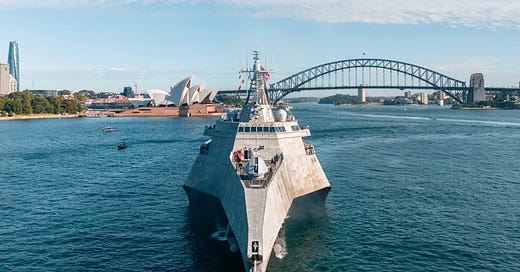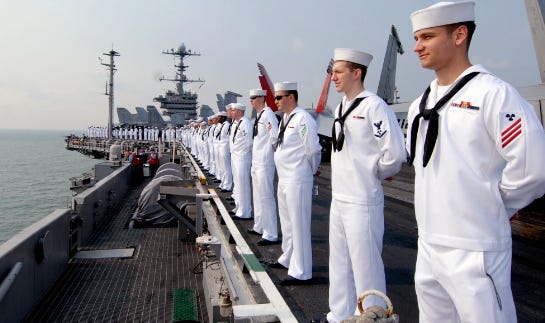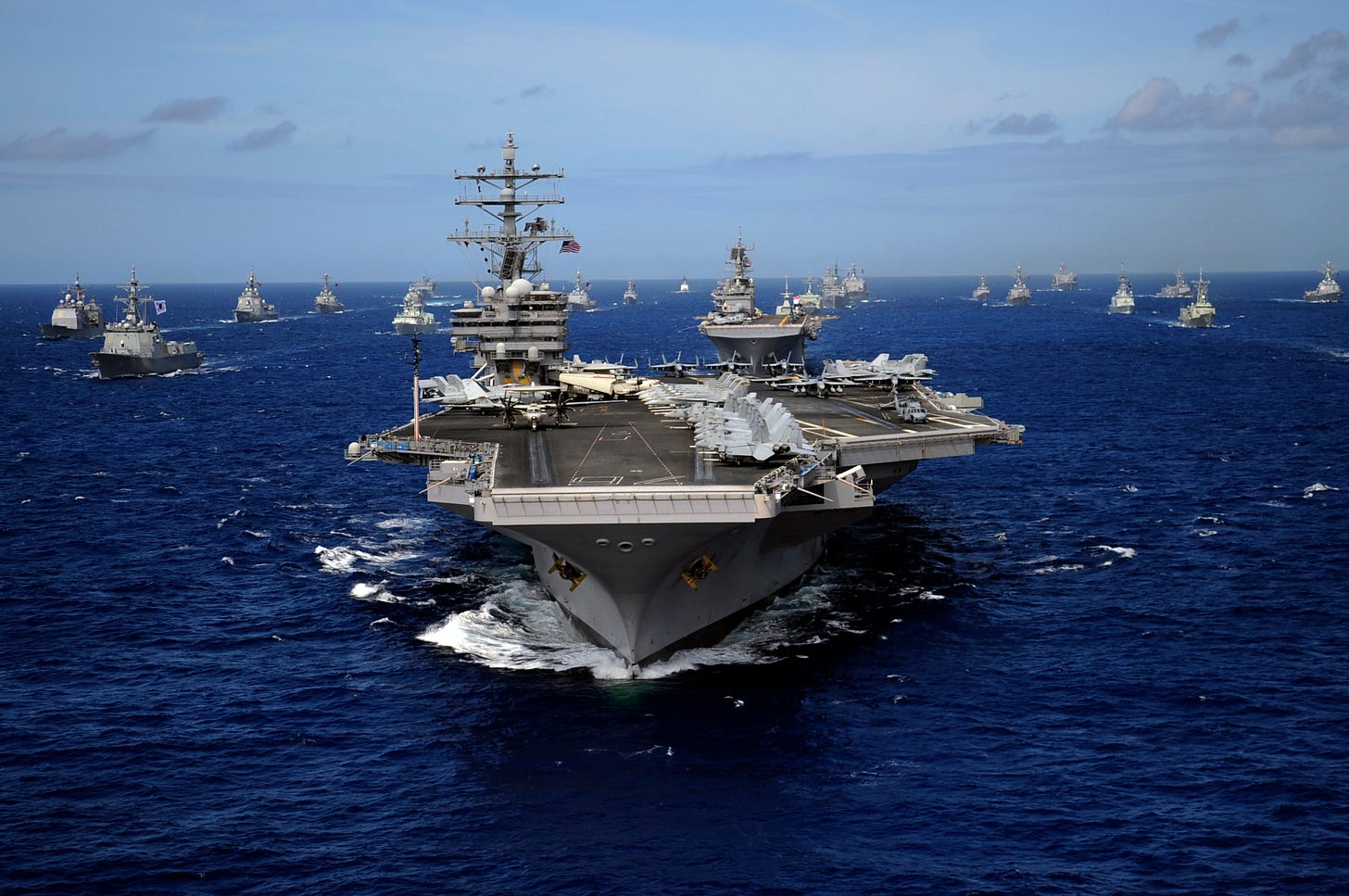The United States isn't guarding the Pacific for fun. It's because losing command of those waters would mean economic, strategic, and global collapse. Simple.
China doesn’t need to invade America. It just needs to shove the U.S. Navy far enough back into the Pacific to make it irrelevant. That’s the whole game.
In the great geopolitical poker game, geography is the card the United States plays with the most confidence. Tucked snugly between two vast oceans and flanked by two neighbours unlikely to invade unless they develop armies of surprisingly well-trained moose or tacos, America can afford to think globally while worrying locally about potholes and primary debates. But even this geographic blessing doesn’t protect it from the sea
.
History has shown that America’s greatest threats don’t march across borders; they sail toward them. The two World Wars? America didn't wade in because Europe needed democracy. It entered to stop German ships from reaching a position where they could touch U.S. shores. And in the Pacific, it wasn't Japan’s love of sushi that provoked the U.S. into war. It was their attempt to dominate the ocean highway connecting East Asia to America’s west coast.
So, while Americans enjoy long weekends and argue about who really won the last election, their navy patrols the Pacific like a bouncer outside a club that hasn’t had a fight yet—but definitely might.
Now let’s flip the map and look at China. Unlike the U.S., China isn’t protected by vast oceans. Instead, it faces a maritime labyrinth—a series of island chains full of sovereign nations, disputed territories, and shipping lanes that are just narrow enough to be blocked and just essential enough to be worth fighting over. China’s economy relies heavily on exports, and exports rely on shipping. Without access to the sea, China’s economic miracle becomes a parable about overbuilt cities and underemployed graduates.
This is why the U.S. Navy is such a thorn in China’s side. It can, if needed, shut off China’s trade lifeline with the turn of a few carrier groups. Understandably, this makes Peking nervous. No authoritarian regime wants to explain a national economic collapse as "an unfortunate side effect of someone else’s destroyers being in the wrong place."
So, Peking has a choice: live with the U.S. Navy near its watery doorstep or develop a naval force that can push the Americans further out. So far, the approach has been the geopolitical equivalent of an awkward standoff at a supermarket self-checkout: nobody wants to escalate, but both sides keep inching closer, pretending they’re just trying to scan bananas
.
The U.S. Navy’s approach has been measured but firm. It hasn’t needed to mount dramatic operations or engage in flashy battles. The mere ability to be there has been enough. Naval deterrence, it turns out, isn’t about how loudly you roar. It’s about calmly blocking access to the snacks.
Australia, meanwhile, plays an understated but essential role in this Pacific balancing act. Being close enough to the South China Sea to matter and stable enough to be trusted, Australia gives weight to America’s presence. It may not send out fleets to patrol every strait, but its support—logistical, political, and, if necessary, military—tilts the balance in America’s favour.
So far, this balancing act has worked. China has not launched a full-scale naval challenge. The U.S. hasn’t backed off. Both sides keep the peace by pretending that war is unthinkable, even though they both know it’s not.
Now, of course, there’s always the temptation to say, “Ah, but what about nukes?” Well, yes. Nukes exist. But they’re like the emergency brake on a train—vital, dangerous, and only used when everything else has gone horribly wrong. Neither side is eager to test mutual destruction as a strategy. They’d rather stick to more manageable deterrents—like ships that bristle with enough weapons to make even the most ambitious admiral reconsider his weekend plans.
Technological threats also exist. There’s AI, drones, cyber warfare, and presumably a few gadgets so classified they don’t even have acronyms yet. But for now, none of these have replaced the cold, wet, expensive business of naval dominance. The U.S. Navy still matters, and whoever holds the Pacific holds the future.
As the Chinese navy modernises and expands, and as the U.S. navy faces questions about ageing fleets and shifting budgets, the balance may tilt. A weakened American presence would open the door for a more aggressive Chinese posture. And at that point, deterrence may turn into something else entirely
.
And that brings us, awkwardly, to America’s current administration. The new term is only just beginning, but flexibility appears to be the word of the day. The desire not to escalate is understandable. Who wants to start a war before breakfast? But reality has a way of overriding intention. Sooner or later, vague warnings and strategic ambiguity may need to give way to more decisive actions.
This isn’t about nationalism or ideology. It’s about geography, trade, and the simple fact that most of the world’s stuff moves by sea. Whoever controls the routes controls the supply. And whoever controls the supply controls the future.
For now, no one’s blinking. And perhaps that’s the best we can hope for.
Please leave comments below.
Please share this with others by clicking the link.
Thanks for reading! Subscribe for free to receive new posts and support my work.







